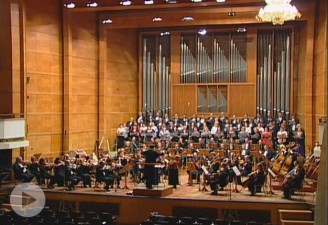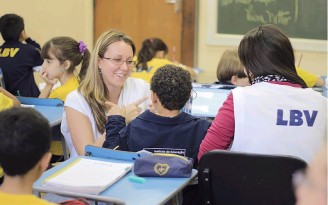
What can be done to put an end to bullying today?
Find out how an activity carried out by the LBV of the USA is helping prevent bullying in a school; the students themselves say how it is being done.
Jéssica Botelho
Friday | July 31, 2015 | 5:15 PM | Last update: September 22, 2016, 4:07 PM (Brasilia time)
More than just another school environment, the classroom is one of the first places where socializing with different people takes place. Students and teachers who have different ways of thinking, behaviors, and ideas regularly interact. In the same way that friendships are formed, there are unfortunately also relationships involving exclusion or rejection and in many cases bullying.
This violent, verbal and/or physical practice in North American schools is a very worrying subject. National statistics from the U.S. government’s Department of Health and Human Services show that 28% of all North American students between 11 and 17 years old have already experienced bullying. Approximately 30% of young people admit to bullying others and another 70.6% say they have seen bullying in their schools. Despite recent research showing that rates at the national level have been dropping since 2005, they are still high. What can be done so that these numbers reduce to zero?

The Good Will Students for Peace program of the Legion of Good Will (LBV) of the United States is making its contribution to the fight against this serious problem: prevention by way of an education based on ethical and all-encompassing ecumenical values*. Beginning with the intimate transformation that takes place in each one, the students themselves start thinking about the consequences of their acts before even carrying them out. The LBV believes that putting oneself in the place of another is essential for knowing up to what point an attitude can be taken or not.
In a recent edition the program discussed the theme "Our Role as Peacemakers in Creating a World free of Bullying" in the Lincoln Avenue School in Orange, New Jersey. Integrating the topic with the Mathematics Common Core Curriculum Standards, 5th, 6th, and 7th grade students developed a research tool utilizing anonymous surveys with specific questions that would allow them to measure the current bullying situation. Later, the students analyzed the data, and created graphs to display the data to their school peers.
The coordinator of the LBV’s program, Sâmara Caruso, explains that, “with this activity, the students were able to use problem solving strategies and find ways they can help make an impact in the solution of this problem. Aside from the whole research project portion of this semester’s Good Will Students for Peace program that gave them the academic content they need, the students were also touched by the values of citizenship, respect, solidarity, and altruism that they felt within themselves the power and desire to work towards a solution to the bullying challenges of their school. This is the differential of the LBV’s Pedagogy as it provides the youth the opportunity to act on issues of global concern with ecumenical practices, and attitudes of solidary leadership.”
STUDENTS MAKE AN ANTI-BULLYING VIDEO:
A LITTLE MORE ABOUT THE SUBJECT. . .
Cléo Fante, a specialist in the subject from Brazil, who has a PhD in Education, explains that the difference between bullying and other types of violence is the fact that bullying is repetitive and causes emotional damage. According to Dr. Fante, victims usually do not react because of a series of factors. Although they may have the same physical conditions as the aggressor, the emotional side is weakened. “Those who practice bullying generally choose those who don’t have certain conditions for defending themselves.” This choice, whether conscious or not, ends up strengthening the aggressors who “have peculiar characteristics: they believe in the impunity of their acts, feel superior to other students, and rarely act alone; they generally form groups in which they are the leader and the others provide support,” adds Brazilian psychiatrist Gustavo Teixeira.
The specialists ponder the fact that those who bully are the ones who most need help. It is important to clarify that the school and family must build an alliance to educate and guide children and teenagers. “The family has to listen and establish a partnership with the school. They need to look for answers for the reason for this behavior and support the child, because they need help. The author of this bullying is going to be punished for his acts, but he must also receive support and respect,” advises the psychiatrist.
Bullying in schools can be avoided by training teachers how to detect this type of situation early on. If you want to comment on this topic and/or know learn more about the Good Will Students for Peace program, write to english@boavontade.com.
Collaboration: Karine Salles
______________________________
* Ecumenical Spirituality — This banner of the Legion of Good Will is present in all its social and educational actions, because it is understood as “the cradle of the most generous values that are born of the Soul; the dwelling of the emotions and of the reasoning enlightened by intuition; the atmosphere that embraces everything that transcends the ordinary field of matter and comes from the elevated human sensitivity, such as Truth, Mercy, Morals, Ethics, Honesty, Generosity, and Brotherly Love.” Extract taken from the book É Urgente Reeducar! [It is Urgent to Re-educate!], which is the fundament of the LBV’s educational proposal, written by educator Paiva Netto, a best-selling author.


